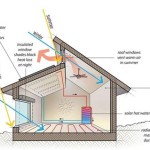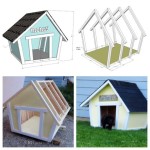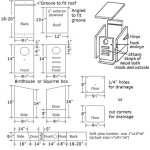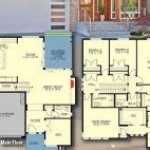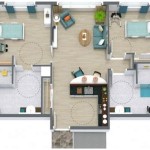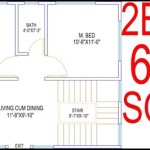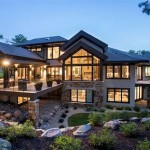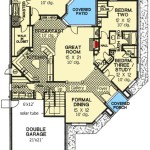House plans are a set of detailed drawings that provide instructions for the construction of a house. They include floor plans, elevations, and sections that show the layout of the house, the exterior appearance, and the interior details. House plans for Florida are specifically designed to meet the unique requirements of the state’s climate, including its high winds and hurricanes. They typically feature hurricane-resistant construction techniques, such as reinforced walls and impact-resistant windows.
When choosing house plans for Florida, it is important to consider the size of the house, the number of bedrooms and bathrooms, and the style of the house. You should also consider the location of the house and the surrounding environment. For example, if you are building in a coastal area, you will need to choose plans that are designed to withstand high winds and flooding.
The main body of this article will discuss the different types of house plans available for Florida, the factors to consider when choosing plans, and how to find the right plans for your needs.
Here are 8 important points about house plans for Florida:
- Hurricane-resistant construction
- High wind resistance
- Impact-resistant windows
- Customizable designs
- Energy efficiency
- Open floor plans
- Outdoor living spaces
- Coastal-inspired styles
When choosing house plans for Florida, it is important to consider the unique requirements of the state’s climate and environment.
Hurricane-resistant construction
Hurricane-resistant construction is a set of building techniques and materials designed to protect a house from damage caused by hurricanes and other high-wind events.
- Reinforced walls
The walls of a hurricane-resistant house are typically reinforced with steel or concrete to make them more resistant to wind damage. This can be done by adding steel reinforcing bars to the concrete walls, or by using concrete blocks that are specially designed to resist wind loads.
- Impact-resistant windows and doors
Impact-resistant windows and doors are designed to withstand the impact of wind-borne debris, such as flying tree branches and pieces of roofing material. These windows and doors are typically made with laminated glass or polycarbonate, which are both very strong and impact-resistant.
- Strong roof
The roof of a hurricane-resistant house is typically designed to withstand high winds and wind-borne debris. This can be done by using a variety of roofing materials, such as concrete tiles, metal roofing, or asphalt shingles with high wind ratings.
- Proper drainage
Proper drainage is also important for hurricane-resistant construction. A house that is properly drained will be less likely to flood during a hurricane. This can be done by installing gutters and downspouts, as well as by grading the land around the house to direct water away from the foundation.
Hurricane-resistant construction can significantly reduce the risk of damage to your home during a hurricane. By following these tips, you can help to protect your home and your family from the devastating effects of these storms.
High wind resistance
High wind resistance is an important consideration for house plans in Florida, where hurricanes and other high-wind events are common. There are a number of design features that can be incorporated into a house plan to improve its wind resistance, including:
- Roof shape
The shape of the roof can have a significant impact on its wind resistance. Roofs with a low profile and a simple shape are less likely to be damaged by high winds than roofs with a high profile or a complex shape.
- Roofing materials
The type of roofing material used can also affect the wind resistance of a roof. Metal roofing and concrete tiles are both very wind-resistant materials. Asphalt shingles can also be wind-resistant, but they must be installed properly to ensure that they will stay in place during high winds.
- Wall construction
The construction of the walls can also affect the wind resistance of a house. Houses with walls that are made of concrete or concrete blocks are more wind-resistant than houses with walls that are made of wood or other lightweight materials.
- Windows and doors
The windows and doors in a house can also be a source of wind damage. Impact-resistant windows and doors are designed to withstand the impact of wind-borne debris, such as flying tree branches and pieces of roofing material. These windows and doors are typically made with laminated glass or polycarbonate, which are both very strong and impact-resistant.
By incorporating these design features into your house plan, you can help to improve its wind resistance and reduce the risk of damage during a hurricane or other high-wind event.
In addition to the design features discussed above, there are a number of other things you can do to improve the wind resistance of your home, such as:
- Planting trees and shrubs around your home
Trees and shrubs can help to slow down the wind and reduce the amount of wind that reaches your home.
- Installing hurricane shutters or impact-resistant windows
Hurricane shutters and impact-resistant windows can help to protect your windows and doors from damage during a hurricane.
- Securing loose objects around your home
Loose objects, such as patio furniture and garbage cans, can become projectiles in high winds. Be sure to secure these objects or bring them inside before a hurricane or other high-wind event.
By taking these precautions, you can help to protect your home and your family from the devastating effects of hurricanes and other high-wind events.
Impact-resistant windows
Impact-resistant windows are an important part of hurricane-resistant construction. They are designed to withstand the impact of wind-borne debris, such as flying tree branches and pieces of roofing material. Impact-resistant windows are typically made with laminated glass or polycarbonate, which are both very strong and impact-resistant.
- Laminated glass
Laminated glass is made up of two or more layers of glass that are bonded together with a thin layer of plastic. The plastic layer helps to hold the glass together in the event of breakage, which makes laminated glass much more impact-resistant than .
- Polycarbonate
Polycarbonate is a type of plastic that is very strong and impact-resistant. It is often used in bullet-proof windows and skylights. Polycarbonate is also very lightweight, which makes it a good choice for large windows and doors.
- Impact-resistant windows are tested to meet specific standards
Impact-resistant windows are tested to meet specific standards, such as the American Society of Testing and Materials (ASTM) E1996 standard. This standard tests windows for their resistance to impact from wind-borne debris. Windows that meet the ASTM E1996 standard are considered to be impact-resistant.
- Impact-resistant windows can help to protect your home from damage during a hurricane
Impact-resistant windows can help to protect your home from damage during a hurricane by preventing wind-borne debris from breaking through the windows and entering your home. This can help to prevent damage to your home’s interior, as well as to your belongings.
If you live in an area that is prone to hurricanes or other high-wind events, it is important to consider installing impact-resistant windows in your home. Impact-resistant windows can help to protect your home and your family from the devastating effects of these storms.
Customizable designs
One of the great things about house plans for Florida is that they are highly customizable. This means that you can find a plan that meets your specific needs and preferences, and then make changes to it to create the perfect home for you and your family.
- You can change the size of the house
If you need a larger or smaller house, you can easily adjust the size of the plan. This is especially helpful if you are on a budget or have a specific lot size to work with.
- You can change the number of bedrooms and bathrooms
If you need more or less bedrooms or bathrooms, you can easily change the plan to accommodate your needs. This is a great way to create a home that is the perfect size for your family.
- You can change the layout of the house
If you don’t like the layout of the plan, you can easily change it to create a layout that works better for you. This is a great way to create a home that is both functional and stylish.
- You can add or remove features
If you want to add or remove features from the plan, you can easily do so. This is a great way to create a home that is truly unique and reflects your personal style.
The possibilities are endless when it comes to customizing house plans for Florida. With a little creativity, you can create the perfect home for you and your family.
Energy efficiency
Energy efficiency is an important consideration for house plans in Florida, where the cost of energy can be high. There are a number of design features that can be incorporated into a house plan to improve its energy efficiency, including:
- Proper insulation
Proper insulation is one of the most important factors in energy efficiency. Insulation helps to keep the heat in during the winter and the cool air in during the summer. There are a variety of insulation materials available, so be sure to choose one that is appropriate for your climate and budget.
- Energy-efficient windows and doors
Energy-efficient windows and doors can help to reduce heat loss and gain. Look for windows and doors that have a high energy efficiency rating. You can also add curtains or blinds to help block out the sun and keep the heat in during the winter.
- Energy-efficient appliances
Energy-efficient appliances can help to reduce your energy consumption. When purchasing new appliances, look for the Energy Star label. Energy Star appliances are designed to be more energy-efficient than standard appliances.
- Solar panels
Solar panels can be used to generate electricity from the sun. This can help to reduce your reliance on the grid and save you money on your energy bills. Solar panels are a good investment for homeowners in Florida, where there is plenty of sunshine.
By incorporating these design features into your house plan, you can help to improve its energy efficiency and reduce your energy costs.
In addition to the design features discussed above, there are a number of other things you can do to improve the energy efficiency of your home, such as:
- Plant trees around your home
Trees can help to shade your home and reduce heat gain during the summer. They can also help to block the wind and keep the heat in during the winter.
- Use natural ventilation
Natural ventilation can help to keep your home cool during the summer. Open windows and doors to allow the breeze to flow through your home. You can also use fans to circulate the air.
- Turn off lights and appliances when you leave a room
This may seem like a small thing, but it can make a big difference over time. Turning off lights and appliances when you leave a room can help to reduce your energy consumption.
By taking these steps, you can help to reduce your energy consumption and save money on your energy bills.
Open floor plans
Open floor plans are a popular choice for house plans in Florida, as they offer a number of advantages over traditional floor plans. Open floor plans create a more spacious and airy feel, and they can also help to improve the flow of natural light throughout the home.
- More spacious and airy feel
Open floor plans create a more spacious and airy feel by eliminating walls and other barriers between different rooms. This can make the home feel larger and more inviting, and it can also help to improve the flow of natural light throughout the home.
- Improved flow of natural light
Open floor plans allow natural light to flow more easily throughout the home. This can help to reduce the need for artificial lighting, and it can also create a more cheerful and uplifting atmosphere.
- Better for entertaining
Open floor plans are ideal for entertaining, as they allow guests to move freely between different areas of the home. This can make it easier to host parties and other gatherings, and it can also help to create a more social atmosphere.
- More versatile
Open floor plans are more versatile than traditional floor plans, as they can be easily adapted to changing needs. For example, if you need to add an extra bedroom or bathroom, it is often easier to do so with an open floor plan. Open floor plans are also more flexible when it comes to furniture placement, which can make it easier to create a space that is both stylish and functional.
Open floor plans are a great choice for homeowners who want a spacious, airy, and versatile home. If you are considering building a new home in Florida, be sure to consider an open floor plan.
Outdoor living spaces
Outdoor living spaces are an important part of house plans in Florida, where the weather is warm and inviting for much of the year. There are a number of different types of outdoor living spaces that can be incorporated into a house plan, including:
- Patios
Patios are a great way to extend your living space outdoors. They can be used for dining, entertaining, or simply relaxing. Patios can be made from a variety of materials, such as concrete, pavers, or wood. They can also be covered to provide shade from the sun and rain.
- Screened porches
Screened porches are a great way to enjoy the outdoors without being bothered by insects. They can be used for dining, entertaining, or simply relaxing. Screened porches can be attached to the house or they can be freestanding. They can also be covered to provide shade from the sun and rain.
- Sunrooms
Sunrooms are a great way to enjoy the outdoors all year round. They are typically enclosed with glass windows and doors, which allows them to be used even when the weather is cold or rainy. Sunrooms can be used for a variety of purposes, such as dining, entertaining, or simply relaxing.
- Decks
Decks are a great way to add extra living space to your home. They can be used for dining, entertaining, or simply relaxing. Decks can be made from a variety of materials, such as wood, composite, or metal. They can also be covered to provide shade from the sun and rain.
When choosing an outdoor living space, it is important to consider your needs and preferences. If you like to entertain, you may want to choose a patio or screened porch that is large enough to accommodate your guests. If you prefer to relax in privacy, you may want to choose a sunroom or deck that is more secluded.
No matter what type of outdoor living space you choose, you are sure to enjoy spending time outdoors in the beautiful Florida weather.
Coastal-inspired styles
Coastal-inspired styles are a popular choice for house plans in Florida, as they reflect the state’s unique coastal environment. Coastal-inspired homes often feature bright colors, natural materials, and open floor plans that take advantage of the beautiful views.
There are a number of different coastal-inspired styles to choose from, including:
- Florida Cracker
Florida Cracker homes are a type of vernacular architecture that is unique to Florida. These homes are typically small and simple, with a raised porch and a metal roof. Florida Cracker homes are often painted in bright colors, such as yellow or pink, and they often feature gingerbread trim.
- Key West Conch
Key West Conch homes are another type of vernacular architecture that is unique to Florida. These homes are typically made from wood and they feature a raised porch and a metal roof. Key West Conch homes are often painted in bright colors, such as blue or green, and they often feature gingerbread trim.
- Mediterranean
Mediterranean-inspired homes are a popular choice for coastal homes in Florida. These homes typically feature white stucco walls, red tile roofs, and wrought iron balconies. Mediterranean-inspired homes can be either large or small, and they often feature open floor plans.
- Coastal Contemporary
Coastal Contemporary homes are a modern take on the traditional coastal home. These homes typically feature clean lines, simple shapes, and large windows that take advantage of the views. Coastal Contemporary homes can be made from a variety of materials, such as concrete, glass, and wood.
When choosing a coastal-inspired style for your home, it is important to consider your needs and preferences. If you want a home that is both stylish and functional, you may want to choose a Coastal Contemporary home. If you prefer a more traditional style, you may want to choose a Florida Cracker or Key West Conch home. No matter what style you choose, you are sure to enjoy living in a coastal-inspired home in Florida.










Related Posts

